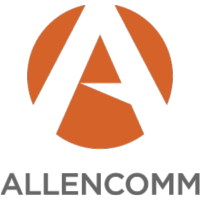Reskilling And Upskilling Program Measurements
Are you looking to demonstrate measurable value for your learning and training initiatives? It is of vital importance that you design new upskilling and reskilling programs to customize your training with measurement metrics already in mind. You can do this based on an internal needs analysis prepared by your team or a consultant, or using desired outcomes to set standards. That said, there are high-level, broad ways to measure and quantify value that can generally be applied in most cases.
You already know that upskilling and reskilling programs are a pivotal way to improve your internal talent pipeline and manage change. That could mean developing new programs as new skills gaps are identified, adding modules to your existing learning offering, or updating and refreshing content to reflect new needs or improve engagement level and efficacy.
Any changes you make should produce measurable improvements. Here are methods to show success, demonstrate movement in the right direction, or find areas for improvements to refine your learning offering.
Ways To Measure Upskilling And Reskilling Programs
Performance
Start by looking at the performance behaviors you want employees to adopt and baseline measures taken before training. These markers could be measured by management, or even be self-reported by employees. They should include indicators like a reduction in errors, higher adoption rates of new processes and new technologies, better completion rates of compliance or other testing, and better individual performance reviews. This category might also include feedback from employees themselves, with greater reported confidence rates, motivation, and feelings of competency.
Productivity
Can you shorten seat time while maintaining the quality of your training program? That’s an automatic win for productivity. Could you train more employees with a single asset as you would when creating eLearning programs that replace repeated in-person seminars? Digitizing content to allow employees to manage training more efficiently and refer back to materials to improve learning retention are consistent ways to increase productivity. Of course, this category includes post-training measurements of things like higher service call completion rates, as well as speed to completion of standard processes, fewer errors that waste resources, and greater safety on the job.
Customer Experience
Are your service representatives taking more calls and getting fewer complaints? Could you show value in a new process tied to your training? Are you training for a new technology that will add value by increasing efficiency? What about sales and branding initiatives? Every time the quality of your customer experience improves and you can show how a training initiative made that possible, you demonstrate the ROI of your training.
EVP
The right upskilling training programs are central to your employee value proposition. Simply put, your EVP communicates the culture and values of the organization. Does your organization prioritize a culture of learning? Make time for training and development programs to help employees perform and see a path to advancement? A focus on employee development is a great way to show the kind of investment that increases motivation, closes skills gaps, and prepares for succession planning.
Retention
Recent studies show that a good onboarding program leads to 69% of employees staying for at least three years. Moreover, training and development opportunities for new hires and staff will improve retention rates. An investment in training employees, whether through an effective onboarding training, reskilling programs, leadership training, or other corporate training initiatives, is likely to pay off in measurable savings for the company. Other studies show that the replacement cost is approximately $16,500 per person for an employee earning a median salary of about $50,000 annually. That’s value added.
Finally, know that collecting data is only the first step. Use it wisely to gain buy-in for initiatives, improve your learning and training programs, and wisely allocate resources to meet goals and achieve your organization’s objectives.
Conclusion
Your training solutions should be designed with measurement strategies already in mind to maximize your results. There are higher-level strategies almost any L&D professional can use to assess the efficacy of your current training programs. Beyond that, we recommend using a detailed needs analysis to identify business and performance needs. A training company or training consultant can be useful to help create that needs analysis and identify opportunities to improve your training offering.

AllenComm
The experts at AllenComm solve business problems with beautiful custom learning solutions. We bring creativity into instructional design. We change behaviors and influence choices. We build better training.



















